AD590KF vs Thermocouples Comparison
Tray Analog, Local 4V~30V Surface Mount -55°C~125°C Analog Current ±2.5°C 1 (Unlimited)









Tray Analog, Local 4V~30V Surface Mount -55°C~125°C Analog Current ±2.5°C 1 (Unlimited)
Compare the AD590KF sensor with thermocouples. Learn about their accuracy, temperature range, durability, and best applications for your project needs.
Product Introduction
Choosing the right temperature sensor can significantly impact your project’s accuracy and reliability. The AD590KF and thermocouples differ in their design, operating principles, and performance. The AD590KF is a semiconductor-based sensor that produces a current proportional to temperature, while thermocouples rely on voltage changes between two metal junctions.
Understanding these distinctions helps you select the best sensor for your needs, whether you prioritize precision, durability, or cost. Each type of sensor offers unique benefits and limitations, making it crucial to analyze their suitability for specific applications.
Overview of Temperature Sensors
AD590KF Overview
The AD590KF is a semiconductor-based temperature sensor designed for precise temperature measurement. It operates by producing a current proportional to the absolute temperature, making it highly linear and predictable. You can use this sensor across a wide range of applications, including industrial automation and HVAC systems. Its compact TO-52 metal can package ensures durability and ease of integration into various systems.
| Specification | Details |
|---|---|
| Temperature Measurement Range | -55°C to +150°C |
| Output Current | Approximately 1 µA/°K |
| Package Type | TO-52 metal can |
| Applications | Industrial automation, HVAC systems |
This sensor is ideal for scenarios requiring stable and accurate readings without the need for complex signal conditioning.
Thermocouples Overview
Thermocouples are versatile temperature probes widely used in industrial environments. They measure temperature by generating a voltage based on the thermoelectric effect, which occurs between two metal junctions. These sensors excel in high-temperature applications, with a range spanning from -200°C to over 2,500°C.
Thermocouples respond quickly to temperature changes, making them suitable for dynamic processes. They are also rugged and can withstand extreme conditions like shock, vibration, and corrosive environments. However, their accuracy typically ranges from ±1°C to ±2°C, which is lower than other temperature sensors like RTDs.
Tip: Thermocouples are a cost-effective choice for projects requiring multiple sensors or operating in harsh conditions.
Operating Principles of Temperature Sensors
Temperature sensors operate based on various principles, each tailored to specific applications. The AD590KF uses proportional-to-absolute-temperature (PTAT) characteristics, relying on bipolar junction transistors (BJTs) and MOSFETs for accurate readings. This design minimizes nonlinearity caused by mismatches in geometrical and process parameters.
Thermocouples, on the other hand, leverage the thermoelectric effect. They generate voltage proportional to the temperature difference between two junctions. This principle allows them to measure a broad range of temperatures, making them suitable for extreme environments.
| Principle | Description |
|---|---|
| Design Principles | Focuses on CMOS temperature sensing cores and PTAT characteristics. |
| Operational Mechanism | Utilizes BJTs and MOSFETs for linear temperature measurement. |
| Nonlinearity Factors | Includes mismatches in parameters and amplifier offsets. |
Understanding these principles helps you choose the right sensor for your application, whether you need precision, durability, or cost-efficiency.
Temperature Sensor Comparison: Advantages and Limitations
AD590KF Advantages
The AD590KF stands out for its precision and simplicity. This sensor delivers high accuracy by producing a current directly proportional to absolute temperature, eliminating the need for complex signal conditioning. Its linear output ensures predictable performance, making it ideal for applications requiring reliable and consistent measurements.
One of the key benefits of the AD590KF is its low power consumption. It operates efficiently, consuming only 1.5 mW at 5 V and 25°C. This makes it suitable for battery-powered devices or systems where energy efficiency is critical. Additionally, the AD590KF offers a wide supply voltage range of 4 V to 30 V, providing flexibility in various circuit designs.
The sensor’s durability is another advantage. It can withstand forward voltages up to 44 V and reverse voltages up to 20 V, ensuring robust performance in challenging environments. Furthermore, the AD590KF eliminates the need for additional circuits like transmitters, filters, or linearization circuits, simplifying system design and reducing costs.
| Feature | AD590KF/883B |
|---|---|
| Output Type | Current proportional to absolute temperature |
| Supply Voltage Range | 4 V to 30 V |
| Calibration | Laser trimmed to 298.2 μA at 25°C |
| High Impedance | >10 MΩ |
| Power Requirements | Low (1.5 mW @ 5 V @ 25°C) |
| Durability | Withstands 44 V forward and 20 V reverse voltage |
| Application Flexibility | Suitable for remote sensing and multiplexing |
| Elimination of Additional Circuits | No need for transmitters, filters, or linearization circuits |
Tip: If you need a temperature sensor for remote sensing or multiplexing, the AD590KF is an excellent choice due to its high impedance and application flexibility.
AD590KF Limitations
Despite its many advantages, the AD590KF has some limitations. Its temperature range, while sufficient for many applications, is narrower compared to thermocouples. The AD590KF operates between -55°C and +150°C, which may not be suitable for extreme temperature environments.
Another limitation is its sensitivity to electrical noise. Since the sensor outputs a current signal, it can be affected by interference in noisy environments. Proper shielding and grounding are necessary to maintain accuracy in such conditions.
Additionally, the AD590KF is not as rugged as thermocouples. It may not perform well in environments with high vibration, shock, or corrosive elements. This makes it less ideal for heavy industrial applications where durability is a priority.
Note: Consider the operating environment and required temperature range before selecting the AD590KF for your project.
Thermocouples Advantages
Thermocouples excel in versatility and durability. They can measure a wide temperature range, from -200°C to over 2,300°C, making them suitable for diverse applications. Whether you’re working in cryogenics or high-temperature industrial processes, thermocouples can handle the job.
Their fast response time is another significant advantage. Thermocouples quickly adapt to temperature changes, enabling real-time monitoring and control. This feature is particularly useful in dynamic processes where rapid adjustments are necessary.
Thermocouples are also incredibly rugged. They are designed to withstand harsh conditions, including shock, vibration, and corrosive environments. This durability makes them ideal for demanding applications like energy production, metallurgy, and chemical processing.
| Advantage/Application | Description |
|---|---|
| Wide temperature range | Thermocouples can measure from -200°C to over 2300°C, suitable for many processes. |
| Fast response | They provide rapid response times for real-time monitoring and control. |
| Rugged and durable | Designed to withstand harsh environments, ideal for demanding applications. |
| Versatility | Available in various types for different industries and processes. |
| Heat Treatment | Essential for precise temperature control in processes like annealing. |
| Chemical Processing | Critical for ensuring product quality and optimizing reaction rates. |
| Food Industry | Important for maintaining freshness and compliance with safety regulations. |
| Pharmaceuticals | Vital for maintaining drug effectiveness and safety during manufacturing. |
| Energy Production | Used for monitoring and optimizing temperature in power plants. |
| Metallurgy | Crucial for achieving desired material properties in metalworking processes. |
Tip: Thermocouples are a great choice for applications requiring ruggedness and the ability to measure extreme temperatures.
Thermocouples Limitations
Thermocouples, while versatile and durable, come with several limitations that you should consider before choosing them for your application. These limitations can impact their accuracy, reliability, and overall performance in certain scenarios.
Accuracy Challenges
Thermocouples often struggle with accuracy compared to other temperature sensors. Their typical accuracy ranges from ±1°C to ±2°C, which may not be sufficient for applications requiring precise measurements. Factors like heat conduction along the thermocouple leads can introduce significant errors. For instance, a study by Park and Childs revealed that surface temperature measurements could deviate by as much as 40°C during rapid cooling due to heat loss.
Susceptibility to Environmental Factors
Thermocouples are highly sensitive to environmental conditions. Variations in thermal conductivity, sensor positioning, and surrounding materials can disturb the temperature field, leading to conduction errors. Attia et al. demonstrated this in a finite-element model study, highlighting how these factors influence measurement accuracy.
Signal Conditioning Requirements
Thermocouples generate a small voltage signal, which requires amplification and signal conditioning for accurate readings. This adds complexity to your system design and increases costs. Additionally, the need for cold junction compensation to account for reference junction temperature can further complicate the setup.
Bias Errors in Dynamic Applications
In dynamic processes, thermocouples can exhibit bias errors due to their heat capacity ratio. Pfahl and Dropkin emphasized the importance of this ratio in characterizing such errors, which can affect the reliability of temperature readings during rapid changes.
Limited Longevity in Extreme Conditions
Although thermocouples are rugged, their performance can degrade over time in extreme environments. Exposure to corrosive substances or high temperatures can cause material wear, reducing their lifespan and reliability.
Summary of Findings
The table below summarizes key studies that highlight thermocouple limitations:
| Study | Findings |
|---|---|
| Pfahl and Dropkin | Identified the importance of heat capacity ratio in bias error characterization. |
| Attia et al. | Revealed conduction errors influenced by thermal conductivities and sensor positioning. |
| Park and Childs | Found surface temperature measurements could be off by 40°C due to heat loss during rapid cooling. |
Note: Thermocouples are better suited for applications where durability and wide temperature range are priorities. However, for tasks requiring high accuracy or minimal signal conditioning, you may need to explore alternative sensors.
Applications of Temperature Sensors
AD590KF Applications
The AD590KF excels in applications requiring precision and stability. Its ability to produce a current proportional to absolute temperature makes it suitable for various industries. For example, it is widely used in temperature measurement tasks below 150°C, such as monitoring HVAC systems or laboratory equipment. Its high impedance and resistance to voltage drops make it ideal for remote sensing, where long-distance data transmission is necessary.
| Application Type | Description |
|---|---|
| Temperature Measurement | Accurate sensing for industrial and laboratory use. |
| Remote Sensing | Reliable performance over long distances. |
| Temperature Compensation | Corrects temperature effects in electronic components. |
| Flow Rate Measurement | Measures fluid flow rates effectively. |
| Level Detection of Fluids | Detects fluid levels in tanks or reservoirs. |
| Anemometry | Measures wind speed and airflow. |
| Multiplexing Capability | Easily integrates into systems using CMOS technology. |
The AD590KF also finds use in specialized applications like anemometry and fluid level detection. Its low power consumption and compact design make it a preferred choice for portable devices and energy-efficient systems.
Tip: If your project involves remote temperature monitoring or multiplexing, the AD590KF offers excellent flexibility and reliability.
Thermocouples Applications
Thermocouples are indispensable in environments requiring ruggedness and a wide temperature range. They are commonly used in industrial processes, such as monitoring furnaces, kilns, and engines. For instance, a K-type thermocouple successfully monitored temperatures up to 1100°C in a custom electric oven for a Stirling engine prototype. This demonstrates their effectiveness in high-temperature applications.
Thermocouples also play a critical role in smart manufacturing. Their design ensures precise temperature monitoring in challenging conditions, such as those found in electronic assembly lines. Additionally, they are essential in industries like energy production, metallurgy, and food processing, where maintaining specific temperature ranges is crucial.
Examples of Thermocouple Applications:
Monitoring high-temperature furnaces in metalworking.
Ensuring food safety during cooking and storage.
Controlling chemical reactions in industrial processes.
Supporting aerospace testing with extreme temperature tolerances.
Note: Thermocouples are a reliable choice for applications requiring durability and fast response times in harsh environments.
Choosing the Right Sensor for Your Application
Selecting the right temperature sensor depends on your specific needs. Start by evaluating the required accuracy, temperature range, and environmental conditions. For instance, the AD590KF is ideal for applications needing precise measurements below 150°C, while thermocouples excel in extreme temperatures and rugged conditions.
Consider factors like response speed, compatibility with your system, and cost. For example, thermocouples are cost-effective for high-temperature monitoring but may require additional signal conditioning. On the other hand, the AD590KF simplifies system design with its linear output and minimal external circuitry.
Accuracy and sensitivity.
Temperature range and resolution.
Environmental conditions.
Signal compatibility and system integration.
Budget and total cost of ownership.
Tip: Consult with sensor manufacturers or experts to ensure the chosen sensor meets your application’s requirements.
Performance Metrics of Temperature Sensors
Accuracy Comparison
When comparing temperature sensors, accuracy is one of the most critical factors to consider. The AD590KF offers high accuracy due to its linear output, which directly correlates with absolute temperature. This makes it suitable for applications where precise measurements are essential. In contrast, thermocouples typically have an accuracy range of ±1°C to ±2°C, which may not meet the requirements of tasks demanding high precision.
A study evaluating low-cost wearable temperature sensors provides a statistical perspective on accuracy. Researchers used methods like Bland-Altman analysis and correlation coefficients to compare sensor readings against fixed weather station monitors. The results revealed significant variations in accuracy based on sensor type and placement. This highlights the importance of selecting the right sensor for your specific application.
| Metric | Description |
|---|---|
| Mean Absolute Error | Measures the average magnitude of errors in a set of predictions. |
| Accuracy (%) | Represents the percentage of correct predictions made by the model. |
| R2 | Indicates the proportion of variance for a dependent variable that's explained by an independent variable. |
| Pearson Correlation Coefficient | Measures the linear correlation between two variables. |
| Kullback-Liebler Divergence | Measures how one probability distribution diverges from a second expected probability distribution. |
| Jenson-Shannon Divergence | A method of measuring the similarity between two probability distributions. |
The AD590KF excels in applications requiring high accuracy, while thermocouples are better suited for scenarios where durability and a wide temperature range take precedence.
Temperature Range Comparison
The temperature range of a sensor determines its suitability for specific environments. The AD590KF operates within a range of -55°C to +150°C, making it ideal for moderate-temperature applications like HVAC systems or laboratory equipment. However, it falls short in extreme conditions.
Thermocouples, on the other hand, shine in this category. They can measure temperatures from as low as -200°C to over 2,300°C, depending on the type. This versatility makes them indispensable in industries like metallurgy, energy production, and aerospace. For example, a K-type thermocouple can handle temperatures up to 1,100°C, making it a reliable choice for high-temperature furnaces.
If your application involves extreme heat or cold, thermocouples are the clear winner. However, for tasks within a moderate range, the AD590KF offers a simpler and more accurate solution.
Response Time Comparison
Fast response time is crucial in applications where real-time monitoring and quick adjustments are necessary. Thermocouples excel in this area due to their simple design and minimal thermal mass. They can quickly adapt to temperature changes, making them ideal for dynamic processes like chemical reactions or engine monitoring.
The AD590KF, while accurate, has a slower response time compared to thermocouples. Its semiconductor-based design introduces a slight delay in detecting rapid temperature fluctuations. This makes it less suitable for applications requiring immediate feedback.
For example, in a manufacturing process where temperature changes occur rapidly, thermocouples provide the fast response needed to maintain control. However, in scenarios where stability and accuracy are more important than speed, the AD590KF remains a strong contender.
Tip: Choose thermocouples for applications requiring fast response time and the AD590KF for tasks prioritizing accuracy and stability.
Reliability and Stability Comparison
When choosing a temperature sensor, reliability and stability are critical factors to consider. These characteristics determine how well a sensor performs over time and under varying conditions. Let’s explore how the AD590KF and thermocouples compare in these areas.
AD590KF Reliability and Stability
The AD590KF offers excellent reliability in controlled environments. Its semiconductor-based design ensures consistent performance, even after prolonged use. This sensor maintains its accuracy over time, making it a dependable choice for applications requiring high accuracy.
One of the key strengths of the AD590KF is its stability. It produces a current directly proportional to absolute temperature, which minimizes drift and ensures predictable readings. This stability is particularly beneficial in applications like laboratory experiments or HVAC systems, where precise and consistent measurements are essential.
However, the AD590KF is sensitive to environmental factors. Electrical noise can interfere with its output, especially in industrial settings with high electromagnetic interference (EMI). Proper shielding and grounding are necessary to maintain its accuracy in such conditions. Additionally, the AD590KF is less durable in harsh environments, such as those with high vibration or corrosive elements.
Tip: Use the AD590KF in stable, low-noise environments to maximize its reliability and accuracy.
Thermocouples Reliability and Stability
Thermocouples are renowned for their durability and ability to perform in extreme conditions. They can withstand high temperatures, mechanical stress, and corrosive environments, making them a reliable choice for demanding applications. For example, thermocouples are commonly used in industries like metallurgy and energy production, where conditions are harsh and unpredictable.
In terms of stability, thermocouples exhibit some limitations. Their accuracy can degrade over time due to material wear and exposure to extreme temperatures. Calibration is often required to maintain reliable readings. Additionally, thermocouples are prone to drift caused by oxidation or contamination of the metal junctions.
Despite these challenges, thermocouples excel in dynamic environments. Their fast response to temperature changes ensures reliable performance in processes requiring real-time monitoring. This makes them ideal for applications like engine testing or chemical reactions, where rapid adjustments are necessary.
Note: Regular calibration and maintenance can help you ensure the long-term reliability of thermocouples.
Comparing the Two Sensors
The table below summarizes the reliability and stability of the AD590KF and thermocouples:
| Feature | AD590KF | Thermocouples |
|---|---|---|
| Long-term Stability | High, with minimal drift | Moderate, requires regular calibration |
| Environmental Durability | Limited to stable, low-noise settings | Excellent, withstands harsh conditions |
| Sensitivity to Noise | High, needs proper shielding | Low, less affected by EMI |
| Maintenance Requirements | Minimal | Regular calibration needed |
| Fast Response | Moderate | High, ideal for dynamic processes |
If your application demands high accuracy and stable performance in controlled environments, the AD590KF is a reliable choice. On the other hand, thermocouples are better suited for rugged conditions and processes requiring fast response times.
Callout: Consider the operating environment and maintenance requirements when selecting a sensor. This ensures you achieve the best balance between reliability and stability.
The AD590KF and thermocouples differ significantly in design, performance, and applications. The AD590KF offers precise measurements and stability, making it ideal for controlled environments like laboratories or HVAC systems. Thermocouples excel in durability and wide temperature ranges, making them suitable for harsh industrial conditions.
When choosing a sensor, evaluate factors like accuracy, temperature range, and usability. Expert reviews emphasize the importance of assessing utility and analytical validity. Structured evidence dossiers guide sensor selection, especially for clinical or regulatory applications.
Tip: Match the sensor to your project’s needs for optimal performance and reliability.
FAQ
What is the main difference between the AD590KF and thermocouples?
The AD590KF uses a semiconductor to produce a current proportional to temperature. Thermocouples generate voltage based on the temperature difference between two metal junctions. The AD590KF offers precision, while thermocouples excel in extreme temperature ranges.
Which sensor is better for high-temperature applications?
Thermocouples are better for high-temperature environments. They can measure up to 2,300°C, depending on the type. The AD590KF, with a range of -55°C to +150°C, is unsuitable for extreme heat.
Do thermocouples require additional components?
Yes, thermocouples need signal conditioning and cold junction compensation. These components ensure accurate readings. The AD590KF, on the other hand, simplifies system design by eliminating the need for extra circuits.
Can I use the AD590KF in noisy environments?
The AD590KF is sensitive to electrical noise. You should use proper shielding and grounding to maintain accuracy. Thermocouples are less affected by noise, making them more reliable in industrial settings.
How do I choose the right sensor for my project?
Evaluate your needs. If you require precision and stability in moderate temperatures, choose the AD590KF. For rugged conditions or extreme temperatures, thermocouples are the better option. Always consider accuracy, range, and environmental factors.
Tip: Consult experts or manufacturers for tailored advice on sensor selection.
Specifications
- TypeParameter
- Factory Lead Time8 Weeks
- Lifecycle Status
Lifecycle Status refers to the current stage of an electronic component in its product life cycle, indicating whether it is active, obsolete, or transitioning between these states. An active status means the component is in production and available for purchase. An obsolete status indicates that the component is no longer being manufactured or supported, and manufacturers typically provide a limited time frame for support. Understanding the lifecycle status is crucial for design engineers to ensure continuity and reliability in their projects.
PRODUCTION (Last Updated: 1 month ago) - Package / Case
refers to the protective housing that encases an electronic component, providing mechanical support, electrical connections, and thermal management.
2-CFlatpack - Mounting Type
The "Mounting Type" in electronic components refers to the method used to attach or connect a component to a circuit board or other substrate, such as through-hole, surface-mount, or panel mount.
Surface Mount - Mount
In electronic components, the term "Mount" typically refers to the method or process of physically attaching or fixing a component onto a circuit board or other electronic device. This can involve soldering, adhesive bonding, or other techniques to secure the component in place. The mounting process is crucial for ensuring proper electrical connections and mechanical stability within the electronic system. Different components may have specific mounting requirements based on their size, shape, and function, and manufacturers provide guidelines for proper mounting procedures to ensure optimal performance and reliability of the electronic device.
Surface Mount - Contact Plating
Contact plating (finish) provides corrosion protection for base metals and optimizes the mechanical and electrical properties of the contact interfaces.
Gold - Number of Pins2
- Test Conditions25°C
- Packaging
Semiconductor package is a carrier / shell used to contain and cover one or more semiconductor components or integrated circuits. The material of the shell can be metal, plastic, glass or ceramic.
Tray - Operating Temperature
The operating temperature is the range of ambient temperature within which a power supply, or any other electrical equipment, operate in. This ranges from a minimum operating temperature, to a peak or maximum operating temperature, outside which, the power supply may fail.
-55°C~125°C - JESD-609 Code
The "JESD-609 Code" in electronic components refers to a standardized marking code that indicates the lead-free solder composition and finish of electronic components for compliance with environmental regulations.
e4 - Pbfree Code
The "Pbfree Code" parameter in electronic components refers to the code or marking used to indicate that the component is lead-free. Lead (Pb) is a toxic substance that has been widely used in electronic components for many years, but due to environmental concerns, there has been a shift towards lead-free alternatives. The Pbfree Code helps manufacturers and users easily identify components that do not contain lead, ensuring compliance with regulations and promoting environmentally friendly practices. It is important to pay attention to the Pbfree Code when selecting electronic components to ensure they meet the necessary requirements for lead-free applications.
no - Part Status
Parts can have many statuses as they progress through the configuration, analysis, review, and approval stages.
Active - Moisture Sensitivity Level (MSL)
Moisture Sensitivity Level (MSL) is a standardized rating that indicates the susceptibility of electronic components, particularly semiconductors, to moisture-induced damage during storage and the soldering process, defining the allowable exposure time to ambient conditions before they require special handling or baking to prevent failures
1 (Unlimited) - Number of Terminations2
- Termination
Termination in electronic components refers to the practice of matching the impedance of a circuit to prevent signal reflections and ensure maximum power transfer. It involves the use of resistors or other components at the end of transmission lines or connections. Proper termination is crucial in high-frequency applications to maintain signal integrity and reduce noise.
SMD/SMT - ECCN Code
An ECCN (Export Control Classification Number) is an alphanumeric code used by the U.S. Bureau of Industry and Security to identify and categorize electronic components and other dual-use items that may require an export license based on their technical characteristics and potential for military use.
EAR99 - Temperature Coefficient
The resistance-change factor per degree Celsius of temperature change is called the temperature coefficient of resistance. This factor is represented by the Greek lower-case letter “alpha” (α). A positive coefficient for a material means that its resistance increases with an increase in temperature.
POSITIVE ppm/°C - Additional Feature
Any Feature, including a modified Existing Feature, that is not an Existing Feature.
TEMPERATURE COEFFICIENT 1 UA/K - Voltage - Supply
Voltage - Supply refers to the range of voltage levels that an electronic component or circuit is designed to operate with. It indicates the minimum and maximum supply voltage that can be applied for the device to function properly. Providing supply voltages outside this range can lead to malfunction, damage, or reduced performance. This parameter is critical for ensuring compatibility between different components in a circuit.
4V~30V - Base Part Number
The "Base Part Number" (BPN) in electronic components serves a similar purpose to the "Base Product Number." It refers to the primary identifier for a component that captures the essential characteristics shared by a group of similar components. The BPN provides a fundamental way to reference a family or series of components without specifying all the variations and specific details.
AD590 - Pin Count
a count of all of the component leads (or pins)
2 - Body Breadth
Body breadth in electronic components refers to the width of the physical body of a component, such as a resistor, capacitor, or integrated circuit. This measurement is crucial for ensuring proper fit within a circuit board or enclosure. It can affect the component's thermal performance, mechanical stability, and overall compatibility with other components in a design. Body breadth is typically specified in millimeters or inches and is an important factor in the selection and design of electronic assemblies.
1.15 mm - Output Type
The "Output Type" parameter in electronic components refers to the type of signal or data that is produced by the component as an output. This parameter specifies the nature of the output signal, such as analog or digital, and can also include details about the voltage levels, current levels, frequency, and other characteristics of the output signal. Understanding the output type of a component is crucial for ensuring compatibility with other components in a circuit or system, as well as for determining how the output signal can be utilized or processed further. In summary, the output type parameter provides essential information about the nature of the signal that is generated by the electronic component as its output.
Analog Current - Power Supplies
an electronic circuit that converts the voltage of an alternating current (AC) into a direct current (DC) voltage.?
5V - Interface
In electronic components, the term "Interface" refers to the point at which two different systems, devices, or components connect and interact with each other. It can involve physical connections such as ports, connectors, or cables, as well as communication protocols and standards that facilitate the exchange of data or signals between the connected entities. The interface serves as a bridge that enables seamless communication and interoperability between different parts of a system or between different systems altogether. Designing a reliable and efficient interface is crucial in ensuring proper functionality and performance of electronic components and systems.
Analog - Output Current
The rated output current is the maximum load current that a power supply can provide at a specified ambient temperature. A power supply can never provide more current that it's rated output current unless there is a fault, such as short circuit at the load.
298.2μA - Forward Voltage
the amount of voltage needed to get current to flow across a diode.
44V - Sensor Type
In electronic components, the parameter "Sensor Type" refers to the specific type of sensor technology used in a particular component to detect and measure physical phenomena such as light, temperature, pressure, motion, or proximity. Different sensor types utilize various principles and mechanisms to convert the detected input into an electrical signal that can be processed by the electronic component. Common sensor types include photodiodes, thermistors, accelerometers, and proximity sensors, each designed for specific applications and environments. Understanding the sensor type is crucial for selecting the right component for a given task and ensuring accurate and reliable sensing capabilities in electronic systems.
Analog, Local - Linearity
In electronic components, linearity refers to the relationship between the input and output signals of the component. A component is said to be linear if its output is directly proportional to its input over a specified range. In other words, when the input signal changes, the output signal changes in a consistent and predictable manner without introducing distortion or non-linear effects.Linearity is an important parameter in electronic components such as amplifiers, filters, and sensors, as it determines the accuracy and fidelity of signal processing. Non-linearities in components can lead to signal distortion, harmonic generation, and other undesirable effects that can degrade the performance of electronic systems.Engineers often characterize the linearity of components by measuring parameters such as gain error, harmonic distortion, and intermodulation distortion. By ensuring that components exhibit good linearity characteristics, designers can create electronic systems that accurately process signals and faithfully reproduce the desired output.
1.5 Cel - Housing
Housing in electronic components refers to the physical enclosure that protects the internal circuitry and components from environmental factors such as dust, moisture, and mechanical damage. It provides structural support and electrical insulation while facilitating heat dissipation. The design and materials used for housing are crucial for the reliability and performance of the electronic device, as they impact factors like thermal management, electromagnetic interference, and overall aesthetics.
CERAMIC - Accuracy - Highest (Lowest)
In electronic components, "Accuracy - Highest (Lowest)" refers to the range within which the actual value of a parameter can deviate from the ideal or specified value. The term "Highest" indicates the upper limit of this range, while "Lowest" indicates the lower limit. For example, if a component has an accuracy of ±5%, the highest accuracy would mean that the actual value could be within 5% above the specified value, while the lowest accuracy would mean it could be within 5% below the specified value. This parameter is crucial for ensuring the reliability and performance of electronic devices by determining how closely the component's output matches the desired value.
±2.5°C - Sensing Temperature - Local
Sensing Temperature - Local refers to the capability of an electronic component to measure the temperature in its immediate environment or vicinity. This parameter is crucial for applications that require monitoring of temperature for performance, safety, or stability purposes. It often involves temperature sensors integrated within components like microcontrollers, power regulators, or other integrated circuits. The local sensing allows for accurate temperature readings that help in adjusting operational conditions, ensuring optimal performance, and preventing thermal-related failures.
-55°C~150°C - Width1.27mm
- Length2.36mm
- Height6.1mm
- REACH SVHC
The parameter "REACH SVHC" in electronic components refers to the compliance with the Registration, Evaluation, Authorization, and Restriction of Chemicals (REACH) regulation regarding Substances of Very High Concern (SVHC). SVHCs are substances that may have serious effects on human health or the environment, and their use is regulated under REACH to ensure their safe handling and minimize their impact.Manufacturers of electronic components need to declare if their products contain any SVHCs above a certain threshold concentration and provide information on the safe use of these substances. This information allows customers to make informed decisions about the potential risks associated with using the components and take appropriate measures to mitigate any hazards.Ensuring compliance with REACH SVHC requirements is essential for electronics manufacturers to meet regulatory standards, protect human health and the environment, and maintain transparency in their supply chain. It also demonstrates a commitment to sustainability and responsible manufacturing practices in the electronics industry.
No SVHC - Radiation Hardening
Radiation hardening is the process of making electronic components and circuits resistant to damage or malfunction caused by high levels of ionizing radiation, especially for environments in outer space (especially beyond the low Earth orbit), around nuclear reactors and particle accelerators, or during nuclear accidents or nuclear warfare.
No - RoHS Status
RoHS means “Restriction of Certain Hazardous Substances” in the “Hazardous Substances Directive” in electrical and electronic equipment.
ROHS3 Compliant - Lead Free
Lead Free is a term used to describe electronic components that do not contain lead as part of their composition. Lead is a toxic material that can have harmful effects on human health and the environment, so the electronics industry has been moving towards lead-free components to reduce these risks. Lead-free components are typically made using alternative materials such as silver, copper, and tin. Manufacturers must comply with regulations such as the Restriction of Hazardous Substances (RoHS) directive to ensure that their products are lead-free and environmentally friendly.
Contains Lead
Parts with Similar Specs
- ImagePart NumberManufacturerPackage / CaseNumber of PinsMountOperating TemperatureInterfacePart StatusMoisture Sensitivity Level (MSL)Operating Supply CurrentView Compare
AD590KF
2-CFlatpack
2
Surface Mount
-55°C ~ 125°C
Analog
Active
1 (Unlimited)
-
2-CFlatpack
2
Surface Mount
-55°C ~ 125°C
Analog
Active
1 (Unlimited)
-
Probe
2
Through Hole
-75°C ~ 540°C
2-Wire, Serial
Active
1 (Unlimited)
1 mA
Radial
2
Through Hole
-55°C ~ 150°C
2-Wire, Serial
Obsolete
1 (Unlimited)
1 mA
Ceramic
2
Through Hole
-
2-Wire, Serial
Active
-
1 mA
Datasheet PDF
- Datasheets :
- ConflictMineralStatement :
 STM8L151K6U3 Microcontroller: Technical Overview and Applications
STM8L151K6U3 Microcontroller: Technical Overview and Applications29 February 202484
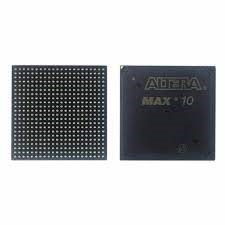 10M16DAU324I6G FPGA Device: Features, Specifications, Advantages
10M16DAU324I6G FPGA Device: Features, Specifications, Advantages14 August 2024733
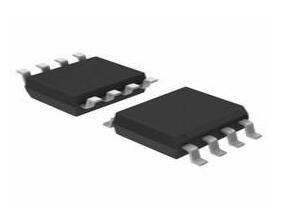 TC7660COA Voltage Converter: Datasheet, Pinout, Circuit
TC7660COA Voltage Converter: Datasheet, Pinout, Circuit22 September 20211125
 TPS62130RGTR:DC-DC Converters, Pinout, Step-Down
TPS62130RGTR:DC-DC Converters, Pinout, Step-Down23 February 20221336
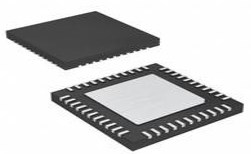 ATMEGA32U4 Microcontroller: Pinout, Datasheet and Equivalents
ATMEGA32U4 Microcontroller: Pinout, Datasheet and Equivalents09 July 202111608
![24C08 EEPROM: Features, Pinout, and Datasheet [Video&FAQ]](https://res.utmel.com/Images/Article/4f85bfc2-391c-4eb5-b831-167cba3f1a00.png) 24C08 EEPROM: Features, Pinout, and Datasheet [Video&FAQ]
24C08 EEPROM: Features, Pinout, and Datasheet [Video&FAQ]07 January 202210123
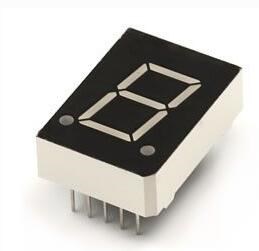 MAN6760 Display Modules: Datasheet, Manufacturer, Application
MAN6760 Display Modules: Datasheet, Manufacturer, Application02 November 20213326
 ICL7660CPAZ Super Voltage Converter: Equivalents, Pinout, and Datasheet
ICL7660CPAZ Super Voltage Converter: Equivalents, Pinout, and Datasheet16 August 20244683
 Advanced CMOS Devices with Wide Bandgap and Ultrawide Bandgap Technologies
Advanced CMOS Devices with Wide Bandgap and Ultrawide Bandgap Technologies15 March 20242985
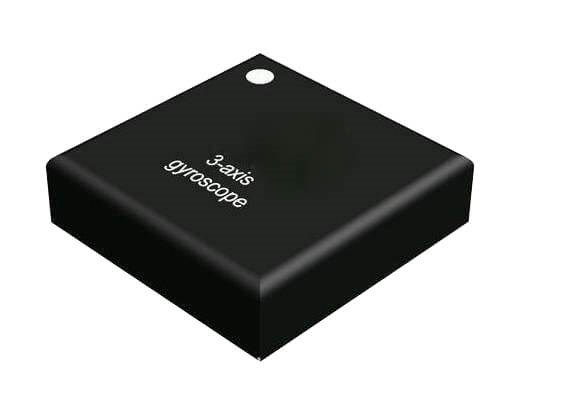 What is a Gyroscope Sensor?
What is a Gyroscope Sensor?11 September 202016947
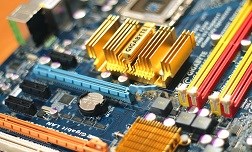 Why does a MOSFET with a Small Internal Resistance Heat Up?
Why does a MOSFET with a Small Internal Resistance Heat Up?09 May 20223451
 A brief Analysis of the 555 Timer Circuit and its Project Applications
A brief Analysis of the 555 Timer Circuit and its Project Applications15 March 20242767
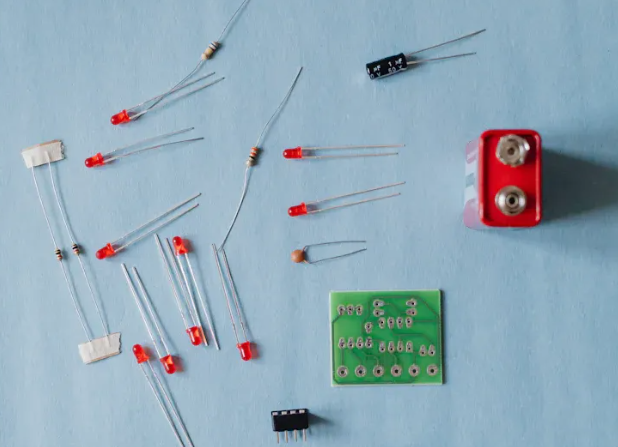 How to Check 2073 Transistor Pinout at Home
How to Check 2073 Transistor Pinout at Home01 September 2025661
 What are the Different Types of Fingerprint Sensors?
What are the Different Types of Fingerprint Sensors?16 December 20208626
 In-depth Analysis of the Global Semiconductor Supply Chain
In-depth Analysis of the Global Semiconductor Supply Chain20 January 202211938
 High Voltage Capacitor Safety: The Ultimate Guide
High Voltage Capacitor Safety: The Ultimate Guide21 August 20253097
Analog Devices Inc.
In Stock
United States
China
Canada
Japan
Russia
Germany
United Kingdom
Singapore
Italy
Hong Kong(China)
Taiwan(China)
France
Korea
Mexico
Netherlands
Malaysia
Austria
Spain
Switzerland
Poland
Thailand
Vietnam
India
United Arab Emirates
Afghanistan
Åland Islands
Albania
Algeria
American Samoa
Andorra
Angola
Anguilla
Antigua & Barbuda
Argentina
Armenia
Aruba
Australia
Azerbaijan
Bahamas
Bahrain
Bangladesh
Barbados
Belarus
Belgium
Belize
Benin
Bermuda
Bhutan
Bolivia
Bonaire, Sint Eustatius and Saba
Bosnia & Herzegovina
Botswana
Brazil
British Indian Ocean Territory
British Virgin Islands
Brunei
Bulgaria
Burkina Faso
Burundi
Cabo Verde
Cambodia
Cameroon
Cayman Islands
Central African Republic
Chad
Chile
Christmas Island
Cocos (Keeling) Islands
Colombia
Comoros
Congo
Congo (DRC)
Cook Islands
Costa Rica
Côte d’Ivoire
Croatia
Cuba
Curaçao
Cyprus
Czechia
Denmark
Djibouti
Dominica
Dominican Republic
Ecuador
Egypt
El Salvador
Equatorial Guinea
Eritrea
Estonia
Eswatini
Ethiopia
Falkland Islands
Faroe Islands
Fiji
Finland
French Guiana
French Polynesia
Gabon
Gambia
Georgia
Ghana
Gibraltar
Greece
Greenland
Grenada
Guadeloupe
Guam
Guatemala
Guernsey
Guinea
Guinea-Bissau
Guyana
Haiti
Honduras
Hungary
Iceland
Indonesia
Iran
Iraq
Ireland
Isle of Man
Israel
Jamaica
Jersey
Jordan
Kazakhstan
Kenya
Kiribati
Kosovo
Kuwait
Kyrgyzstan
Laos
Latvia
Lebanon
Lesotho
Liberia
Libya
Liechtenstein
Lithuania
Luxembourg
Macao(China)
Madagascar
Malawi
Maldives
Mali
Malta
Marshall Islands
Martinique
Mauritania
Mauritius
Mayotte
Micronesia
Moldova
Monaco
Mongolia
Montenegro
Montserrat
Morocco
Mozambique
Myanmar
Namibia
Nauru
Nepal
New Caledonia
New Zealand
Nicaragua
Niger
Nigeria
Niue
Norfolk Island
North Korea
North Macedonia
Northern Mariana Islands
Norway
Oman
Pakistan
Palau
Palestinian Authority
Panama
Papua New Guinea
Paraguay
Peru
Philippines
Pitcairn Islands
Portugal
Puerto Rico
Qatar
Réunion
Romania
Rwanda
Samoa
San Marino
São Tomé & Príncipe
Saudi Arabia
Senegal
Serbia
Seychelles
Sierra Leone
Sint Maarten
Slovakia
Slovenia
Solomon Islands
Somalia
South Africa
South Sudan
Sri Lanka
St Helena, Ascension, Tristan da Cunha
St. Barthélemy
St. Kitts & Nevis
St. Lucia
St. Martin
St. Pierre & Miquelon
St. Vincent & Grenadines
Sudan
Suriname
Svalbard & Jan Mayen
Sweden
Syria
Tajikistan
Tanzania
Timor-Leste
Togo
Tokelau
Tonga
Trinidad & Tobago
Tunisia
Turkey
Turkmenistan
Turks & Caicos Islands
Tuvalu
U.S. Outlying Islands
U.S. Virgin Islands
Uganda
Ukraine
Uruguay
Uzbekistan
Vanuatu
Vatican City
Venezuela
Wallis & Futuna
Yemen
Zambia
Zimbabwe










